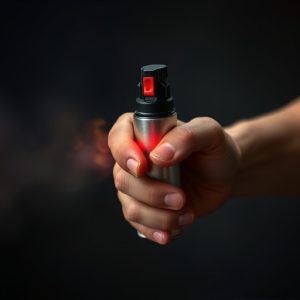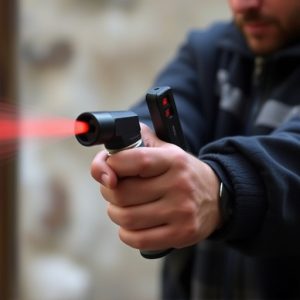OC Spray: Capsaicin Concentration Levels & Riot Control Effectiveness
OC Spray, a non-lethal riot control agent, utilizes capsaicin (the same chemical in chili peppers) i…….
OC Spray, a non-lethal riot control agent, utilizes capsaicin (the same chemical in chili peppers) in concentrations ranging from 0.5% to 2% to temporarily disrupt crowd movements without causing permanent harm. Understanding these capsicum concentration levels is crucial for evaluating OC Spray's effectiveness and associated risks, ensuring informed decision-making for specific needs, from low to high strength options.
“In the realm of riot control, innovative tools like the inflammatory riot control spray dispenser play a pivotal role in maintaining public safety. This article delves into the effectiveness of OC (Oleoresin Capsaicin) spray, its active ingredient capsaicin, and the science behind concentration levels. We explore how these factors contribute to its riot-suppression capabilities while also examining safety considerations and regulatory aspects surrounding its use. Understanding OC Spray’s capsaicin concentration levels is crucial for both law enforcement and public awareness.”
- Understanding OC Spray and its Active Ingredient: Capsaicin
- The Science Behind Capsaicin Concentration and Its Effectiveness in Riot Control
- Safety Considerations and Regulatory Aspects of Using Inflammatory Riot Control Spray Dispensers
Understanding OC Spray and its Active Ingredient: Capsaicin
OC Spray, also known as pepper spray, is a non-lethal riot control agent that disrupts normal bodily functions when deployed. At its core, it contains capsaicin, the active ingredient responsible for the stinging sensation associated with chili peppers. This chemical agent works by targeting the body’s nerve endings, specifically those in the eyes and respiratory system, causing temporary disorientation and difficulty breathing.
The concentration levels of capsaicin in OC Spray vary, typically ranging from 1% to 2%. This concentration is enough to incapacitate an individual for a short period, allowing law enforcement or riot control teams to subdue and arrest suspects or disperse crowds. Understanding the active ingredient and its concentration levels is crucial when assessing the effectiveness and potential risks of using this type of riot control equipment.
The Science Behind Capsaicin Concentration and Its Effectiveness in Riot Control
The effectiveness of riot control spray, often referred to as OC spray or pepper spray, directly correlates with its capsaicin concentration levels. Capsaicin is the active ingredient in chili peppers, responsible for their fiery heat sensation. In the context of riot control, this compound disrupts normal nerve function when it comes into contact with eyes, skin, and respiratory pathways.
Concentration levels typically range from 0.5% to 2%. Lower concentrations may cause mild irritation while higher ones can induce incapacitation for several minutes. The right balance ensures the spray’s effectiveness as a non-lethal force measure without causing severe or long-lasting harm. This strategic use of capsaicin concentration levels makes OC spray a valuable tool in riot control scenarios, where swift disruption and crowd management are paramount.
Safety Considerations and Regulatory Aspects of Using Inflammatory Riot Control Spray Dispensers
OC Spray, equipped with capsaicin at specific concentration levels, has emerged as a powerful tool in riot control. The science behind capsaicin’s effectiveness lies in its ability to induce pain and create a temporary but effective barrier against violence. However, it is crucial to balance its potency with safety considerations. Regulatory aspects ensure responsible use, guiding law enforcement agencies in managing crowds while upholding public safety. Understanding OC Spray’s mechanics and adhering to safety protocols are essential steps towards efficient riot control without causing undue harm.


